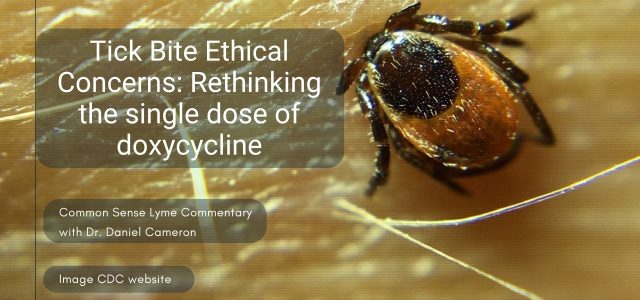
Tick Bite Ethical Concerns Start with False Reassurance
A woman walked into my clinic six weeks after a tick bite. She’d been given a single dose of doxycycline at urgent care and told, “That’s all you need.” But now, she could barely get out of bed. Her fatigue was overwhelming. Her joints throbbed. Her thinking felt like quicksand.
The test was negative, but something was wrong. Tick bite ethical concerns begin exactly here: when reassurance is offered without a full understanding of the risks.
Tick bites can transmit more than just Lyme disease—and guidelines don’t always tell the full story. Patients are left vulnerable to underdiagnosis, untreated co-infections, and ethical oversights that delay care and cause harm.
Ethical Principles Behind Tick Bite Decisions
🧭 Autonomy: Patients Deserve Full Disclosure
Informed consent isn’t just a form—it’s a conversation. And too often, patients aren’t told:
-
-
Lyme testing may miss early or chronic cases
-
The 24–36 hour tick attachment rule isn’t foolproof
-
Co-infections aren’t covered by standard antibiotics
-
A single dose isn’t always enough
-
Tick bite ethical concerns include the right to know all the risks—not just the ones the protocol covers.
Non-Maleficence: Do No Harm Includes Not Dismissing
False reassurance causes real harm:
-
-
Patients assume they’re protected and delay follow-up
-
Chronic Lyme, neurologic Lyme, or Lyme arthritis may emerge
-
Co-infections like Babesia or Powassan virus can progress silently
-
Dismissing these realities violates the core ethical principle of non-maleficence—especially when harm could have been prevented with better communication.
Beneficence: Personalized Care Over Protocols
Protocols exist to guide—not limit—clinical care. The 200 mg single dose of doxycycline may prevent some cases of Lyme rash, but:
-
-
It doesn’t prevent all stages or forms of Lyme
-
It doesn’t treat co-infections
-
It doesn’t replace clinical follow-up
-
Tick bite ethical concerns demand care that’s adapted to the individual, not rubber-stamped from a chart.
Justice: Unequal Access and Biased Dismissals
Ethical care means fair care—but not all patients are treated equally:
-
-
Women’s symptoms are more likely to be labeled psychological
-
Children under 8 are often excluded from treatment without safer alternatives
-
Rural and low-income patients may lack access to specialty care
-
Justice in medicine means acknowledging and correcting these systemic disparities. And tick bite ethical concerns should include who’s most likely to fall through the cracks.
Co-Infection Ethics: What the Guidelines Miss
Tick bites don’t just transmit Lyme. They can transmit:
-
-
Babesia – a malaria-like parasite not treated by doxycycline
-
Anaplasma/Ehrlichia – bacterial infections with faster transmission timelines
-
Powassan virus – which can cause severe encephalitis within 15 minutes
-
Most prophylaxis protocols focus solely on Lyme. But ignoring co-infections means patients are given false protection—a serious ethical failure when their health is on the line.
Pediatric Ethics: The Youngest Are Often Overlooked
Children under 8 are frequently excluded from doxycycline due to outdated concerns about dental staining. But:
-
-
They’re more likely to play in wooded or grassy areas
-
They often can’t communicate early symptoms
-
They may present with non-classic signs like behavioral changes
-
Tick bite ethical concerns should address how we protect nonverbal or vulnerable patients. When guidelines default to “do nothing,” we risk ignoring the very group least able to advocate for themselves.
Conclusion: Tick Bite Ethical Concerns Must Be Addressed
The issue isn’t the antibiotic—it’s the assumptions around it. Tick bite ethical concerns include:
-
-
Failing to offer informed consent
-
Misrepresenting risk and protection
-
Ignoring co-infections
-
Applying one-size-fits-all medicine
-
Overlooking pediatric and gender-based vulnerabilities
-
As physicians, our job isn’t just to follow protocols—it’s to protect people. That means recognizing what tick bite guidelines don’t tell us—and doing better because of it.


